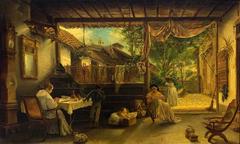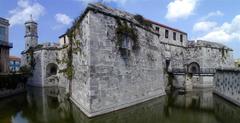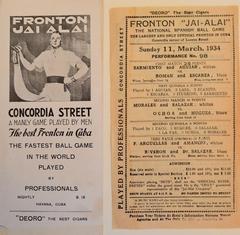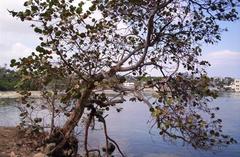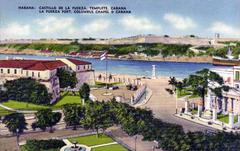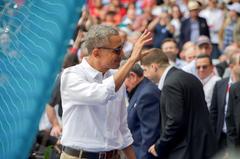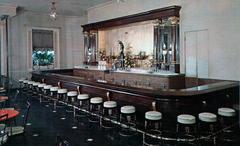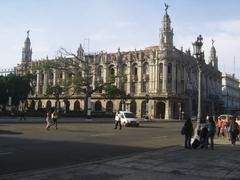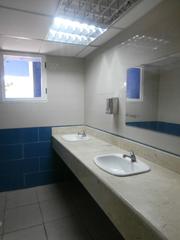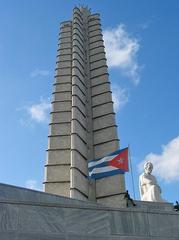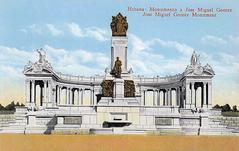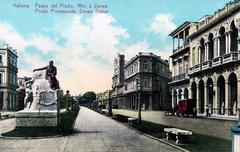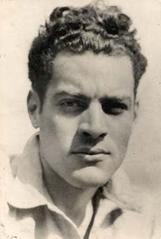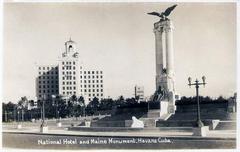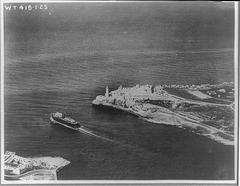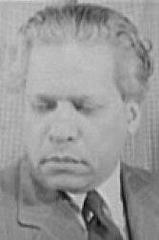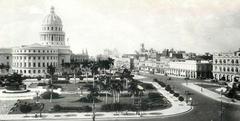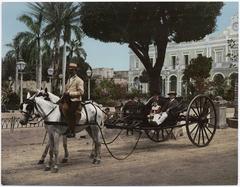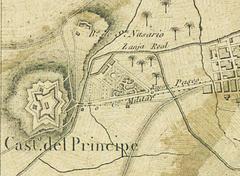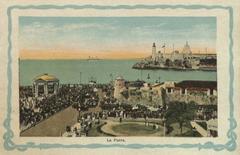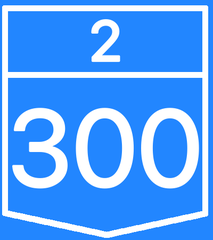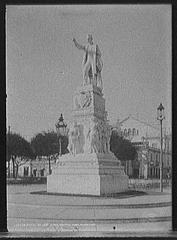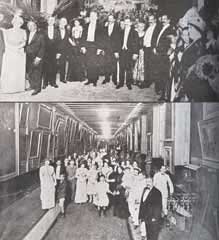
National Museum of Fine Arts of Cuba: Visiting Hours, Tickets, and Historical Sites in Havana
Date: 14/06/2025
Introduction
The National Museum of Fine Arts of Cuba (Museo Nacional de Bellas Artes de La Habana) stands as one of the most significant cultural institutions in Havana, celebrating the island’s artistic legacy and its connections to the global art world. Founded in 1913, the museum has grown to encompass two architecturally stunning buildings—each a treasure trove of Cuban and international art. Whether you’re a devoted art lover or a traveler exploring Havana’s historical sites, this guide provides a comprehensive overview of visiting hours, ticketing, amenities, and practical tips to help you make the most of your experience.
From the colonial period to contemporary times, the museum’s collections offer a vivid narrative of Cuba’s cultural and artistic evolution. Its central location, accessibility, and proximity to other iconic Havana landmarks make it an essential destination for understanding Cuba’s identity and its dialogue with the wider world. For up-to-date details and enhanced planning, consult the official museum resources and the Audiala app. (Wikipedia; Anywhere.com; Love Cuba)
Table of Contents
- Founding and Early Development
- Architectural Significance: The Two Palaces
- Evolution of the Collections
- Visiting Information: Hours, Tickets, and Tips
- Facilities and Accessibility
- Guided Tours and Educational Programs
- Nearby Attractions and Travel Tips
- Visitor Experience and Practical Advice
- Photographic Opportunities and Visuals
- Frequently Asked Questions (FAQ)
- Summary and Call to Action
- References
1. Founding and Early Development
The museum was officially established on February 23, 1913, spearheaded by architect Emilio Heredia. Originally intended to preserve and promote both Cuban and international art, the museum’s early years were marked by frequent relocations and a steadily growing collection. It ultimately settled on the site of the former Colón Market in central Havana, solidifying its role as a key institution in Cuba’s cultural landscape (Wikipedia).
2. Architectural Significance: The Two Palaces
Palacio de Bellas Artes
Inaugurated in 1954 and designed by Alfonso Rodríguez Pichardo, the Palacio de Bellas Artes is dedicated exclusively to Cuban art. The building’s modernist style incorporates classical elements, with impressive marble staircases and luminous galleries that guide visitors through the story of Cuban art. Its location near Parque Central places it firmly within Havana’s cultural heart (Wikipedia; Anywhere.com).
Palacio del Centro Asturiano
Constructed in 1927 as a social club for Asturian immigrants, this palace is an architectural gem featuring ornate columns and grand interiors. Since its integration into the museum, it has housed the Universal Art Collection, displaying masterpieces from Europe, Asia, and Latin America. Its proximity to the Prado and Old Havana highlights its importance among Havana’s UNESCO-listed sites (Wikipedia; Anywhere.com).
3. Evolution of the Collections
The museum’s collections reflect the breadth of Cuba’s art history and its global connections. The Cuban Art Collection showcases works from the 17th century to the present, including colonial religious art, Costumbrismo, modernism, and revolutionary themes. Renowned artists such as Wifredo Lam, Amelia Peláez, René Portocarrero, and Victor Manuel feature prominently.
The Universal Art Collection in the Centro Asturiano spans ancient Egyptian to early 20th-century European masters—Caravaggio, Goya, Rubens, Velázquez—and includes Asian and Latin American works, underlining Cuba’s role as a cultural crossroads (Love Cuba).
4. Visiting Information: Hours, Tickets, and Tips
- Hours: Tuesday–Sunday, 10:00 AM–6:00 PM; closed Mondays and select holidays (Museo Nacional de Bellas Artes).
- Admission: 120 CUP (approx. 5 USD) for foreign visitors, 20 CUP for Cuban nationals, children under 12 free.
- Tickets: Purchase at either building’s entrance. A single ticket provides access to both buildings on the same day.
- Peak Times: The museum is busiest from 11:00 AM–2:00 PM. Early morning or late afternoon visits are recommended for a quieter experience.
- Duration: Allocate 2–3 hours for both buildings; art enthusiasts may wish to stay longer.
5. Facilities and Accessibility
- Restrooms: Available on the ground floors of both buildings.
- Cloakroom: Secure storage for large bags and umbrellas.
- Cafés and Shops: The Palacio de Bellas Artes features a museum shop with art books and souvenirs, while the Centro Asturiano offers a café serving Cuban coffee and light snacks.
- Accessibility: Both buildings have ramps and elevators; however, some older areas may have limited access. Contact the museum ahead for specific needs (Museo Nacional de Bellas Artes).
- Air Conditioning: Most galleries are air-conditioned, though some older rooms can be warm in summer.
6. Guided Tours and Educational Programs
- Guided Tours: Offered in Spanish and English (advance booking recommended).
- Workshops: Educational activities and temporary exhibitions, often in collaboration with local artists.
- Library: An in-house library is available to researchers and art students by request.
7. Nearby Attractions and Travel Tips
The museum’s prime location allows for easy exploration of other Havana historical sites, including:
- Gran Teatro de La Habana
- El Capitolio
- Parque Central
- Paseo del Prado
- Museo de la Revolución
Local restaurants and cafés are within walking distance, making it convenient to combine your museum visit with other cultural experiences. Walking, taxis, and bicitaxis are all practical transport options (Museo Nacional de Bellas Artes).
8. Visitor Experience and Practical Advice
- Language: Most signage is in Spanish, with English translations for key works.
- Photography: Allowed in most areas without flash or tripods; some galleries may have restrictions—check signage or staff instructions.
- Conduct: Food and drinks are not permitted in gallery areas. Please keep phones on silent and take calls outside exhibition spaces.
- Payment: Cuban pesos (CUP) are accepted throughout; some credit cards (Visa, Mastercard) may be used in the café and shop, but carrying cash is advisable due to inconsistent card acceptance (Cuba Travel Advisory).
9. Photographic Opportunities and Visuals
The museum’s grand façades, marble staircases, and well-lit galleries provide excellent photo backdrops. For digital visitors, the museum website and partner platforms offer virtual tours and interactive maps. Alt text for images should include SEO-friendly terms like “National Museum of Fine Arts of Cuba visiting hours” and “Museo Nacional de Bellas Artes tickets.”
10. Frequently Asked Questions (FAQ)
What are the museum’s visiting hours?
Tuesday–Sunday, 10:00 AM–6:00 PM; closed Mondays and select public holidays.
How much are tickets?
120 CUP (approx. 5 USD) for foreigners; 20 CUP for Cuban nationals; children under 12 free.
Are guided tours available?
Yes, in Spanish and English (advance booking recommended).
Is the museum accessible for visitors with reduced mobility?
Most areas are accessible via ramps and elevators, though some historic areas may have limited access.
Can I take photographs inside?
Yes, in most galleries; flash and tripods are prohibited.
What payment methods are accepted?
Cuban pesos preferred; some credit cards accepted in shops/cafés. Carry cash due to potential card issues.
What other attractions are nearby?
Gran Teatro de La Habana, El Capitolio, Parque Central, and Museo de la Revolución are all within walking distance.
11. Summary and Call to Action
The National Museum of Fine Arts of Cuba offers a compelling journey through Cuban and world art, set within two remarkable historic buildings at the heart of Havana. With accessible facilities, guided tours, and proximity to other major attractions, it is a must-visit for anyone seeking to understand Cuba’s artistic and cultural heritage. For the latest updates, interactive guides, and exclusive content, download the Audiala app and follow official museum channels on social media.
Explore more about Havana and Cuban art by visiting our related articles: [Exploring Old Havana’s Historical Sites], [A Guide to Cuban Contemporary Art], and [Top Museums in Havana].
12. References
- Wikipedia
- Anywhere.com
- Love Cuba
- Museo Nacional de Bellas Artes
- Visit Cuba
- What’s On in Cuba
- Cuba Travel Advisory
- GPSmyCity
- WhichMuseum
- Trip Cuba
- Cuban Travel Agency

